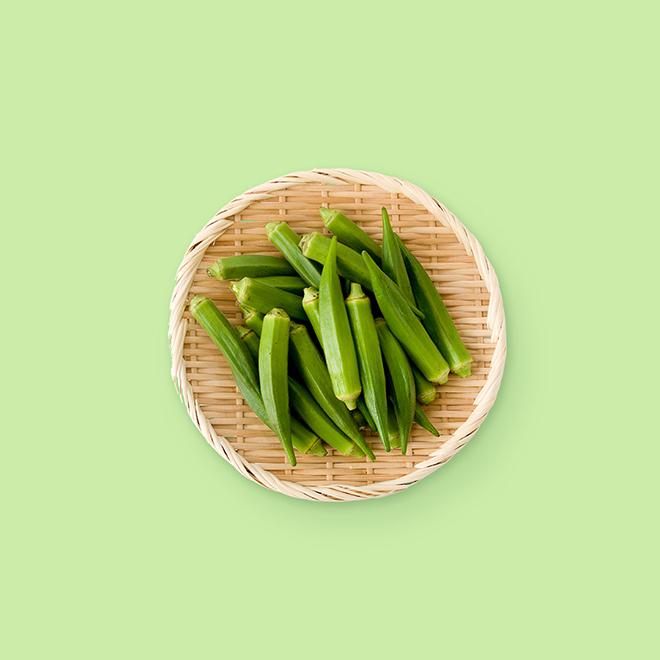Okra




Okra, also known as lady's fingers, is a flowering plant native to Africa and widely cultivated in tropical and subtropical regions around the world. The edible part is the green seed pod, usually harvested immature, around 3-8 inches long. The pods have a slightly fuzzy texture and a mild, slightly grassy flavor.
When buying okra, pay attention to the color and size. It should be a bright and uniform green color, without any yellow parts and it should be firm with the size being similar to all okras. Since unripe okra can be slightly toxic, make sure you always buy the ripe ones.
Okra should be stored in a refrigerator in a plastic bag, separate from all the other fruits and vegetables. It shouldn’t be washed until ready to use because dampness can encourage sliminess. It’s best to use it within 2-3 days.
Okra ice cream! Yep, you read that right! You can enjoy a new, unexpected ice cream flavor with just a few ingredients. Blend cooked okra with coconut milk, honey, and spices for a unique and surprisingly delicious vegan ice cream base.
Don't discard those okra seeds! Roast them like pumpkin seeds for a healthy and nutty snack. They're surprisingly delicious and packed with protein and fiber.
Blend okra with honey and yogurt for a hydrating and exfoliating face mask. The okra's mucilage has been used traditionally for its skin-soothing properties.
Did you know that in West Africa okra stems are used to create the ngoni, a stringed instrument with a distinctive buzzing sound while in some regions mature okra stalks are used to produce paper?
Okra is packed with essential vitamins, minerals, and antioxidants. It's especially high in vitamin C, potassium, and fiber, making it a nutritious addition to any diet.
Okra mucilage (the slimy stuff) has been used traditionally as a natural fish attractant. Soak okra pods in water, and the resulting liquid can lure fish without harming the environment.
Okra loves bold flavors like chili flakes, curry powder, or Cajun seasoning. Don't be shy with the spices!
To reduce the sliminess of okra, sprinkle your chopped okra with salt and let it sit for 15 minutes. The salt draws out excess moisture, reducing sliminess. Rinse before cooking.
Quick cooking methods like grilling, stir-frying, or roasting at high temperatures reduce sliminess and caramelize the edges for extra flavor.
Okra pairs well with strong herbs and spices as well as acidic foods. However, even on its own, okra can be delicious as a snack when made into chips or salad.
Okra packs a surprising punch when it comes to potential health benefits. It is rich in various essential nutrients, including vitamins C, K, A, folate, magnesium and fiber. Okra also boasts antioxidants like phenolic acids and flavonoids, which fight free radicals and potentially reduce the risk of chronic diseases.
Some studies suggest okra may help regulate blood sugar levels and improve insulin sensitivity, potentially beneficial for individuals with diabetes or prediabetes. Okra's low calorie and high fiber content make it a filling food option, potentially aiding in weight management efforts.
Corrections or improvements? Email us at
content@sidechef.com